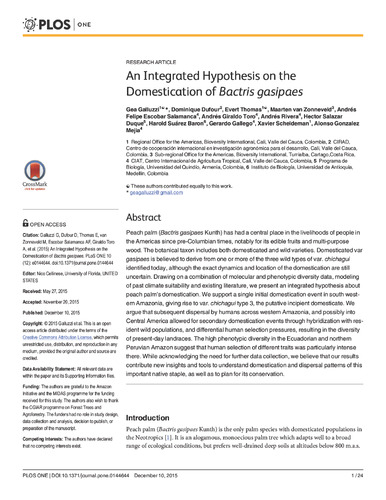An integrated hypothesis on the domestication of Bactris gasipaes
Peach palm (Bactris gasipaes Kunth) has had a central place in the livelihoods of people in
the Americas since pre-Columbian times, notably for its edible fruits and multi-purpose
wood. The botanical taxon includes both domesticated and wild varieties. Domesticated var
gasipaes is believed to derive from one or more of the three wild types of var. chichagui
identified today, although the exact dynamics and location of the domestication are still
uncertain. Drawing on a combination of molecular and phenotypic diversity data, modeling
of past climate suitability and existing literature, we present an integrated hypothesis about
peach palm’s domestication. We support a single initial domestication event in south western
Amazonia, giving rise to var. chichagui type 3, the putative incipient domesticate. We
argue that subsequent dispersal by humans across western Amazonia, and possibly into
Central America allowed for secondary domestication events through hybridization with resident
wild populations, and differential human selection pressures, resulting in the diversity
of present-day landraces. The high phenotypic diversity in the Ecuadorian and northern
Peruvian Amazon suggest that human selection of different traits was particularly intense
there. While acknowledging the need for further data collection, we believe that our results
contribute new insights and tools to understand domestication and dispersal patterns of this
important native staple, as well as to plan for its conservation

